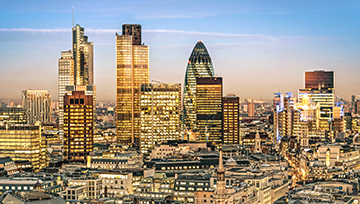Talking points:
- Choosing the right time to trade and where to place an FX trade is almost as important as the trade itself.
- That’s because you need a highly liquid market that’s easy to enter and exit, with the lowest possible spread between buying and selling prices.
Learn how to trade like an expert by reading our guide to the Traits of Successful Traders
Check out the top trading opportunities for 2018 on the DailyFX Trading Guides page
When is the best time to trade and where to trade forex
You’ve done your homework and you’ve decided that you want to enter a trade, buying or selling a particular currency pair. So you go ahead and place it, right? Actually, no. First you need to decide where to enter the trade and when.
That’s because you want to buy or sell in a market that’s highly liquid, where it’s easy to enter and exit if you want to, and where the gap between the buying price and the selling price – the ‘spread’ – is as low as possible. As for when, there are times of day when volumes are high and times when volumes are low, and the former is preferable for precisely the same reasons: more liquidity means you can buy or sell when you want to, and at a lower cost.
By the same reasoning, you have more chance of making a profit if the pair you are trading is one where liquidity is high: EURUSD, USDJPY or GBPUSD, for example.
Where forex volumes are high
Fortunately, the Bank for International Settlements, often called the central bankers’ bank, collects and publishes data every three years and has many of the answers. Its last report was back in April 2016 but the principle lessons from it are still well worth learning.
So here’s where volumes are highest geographically, according to the BIS, with the percentage of world turnover in brackets:

- United Kingdom (36.9%)
- United States (19.5%)
- Singapore (7.9%)
- Hong Kong (6.7%)
- Japan (6.1%)
- France (2.8%)
- Switzerland (2.4%)
- Australia (1.9%)
- Germany (1.8%)
- Denmark (1.5%)
Clearly, the three most liquid markets are the UK, the US and Singapore so that is where professional traders will be doing most of their business. And that matters even if you are a retail trader using a spread-betting platform like the one provided by IG, DailyFX’s parent company, because when those markets are open liquidity is highest.
When forex volumes are high
That takes us to the question of when. As the table above shows, European trading hours are good, because then the UK market is open and so are four more of the “top ten”. But best of all is the European afternoon/US morning, when all those European markets are open and the US is too.
The US afternoon is fine as well, even though liquidity will be lower – after all, 19.5% of a $5 trillion per day market is a lot of money however you count it. Asian hours are fine too, with Singapore, Hong Kong and Japan collectively accounting for 20.7% of world business, or a little more than the US alone.
However, the figures also show the period to avoid: the hours between the US close and the Asia opening. Indeed, by convention, charts show the “close” as the prices at the end of the US session even though the FX markets are open 24 hours a day.
Between the US close and the Asia opening, the only major markets open are Australia, with 1.9% of world business, and New Zealand, with a mere 0.2%.
Which currencies are most liquid
The next important factor to bear in mind is that some currencies are far more liquid than others, so these are the ones to concentrate on. The BIS ranks them as follows, with their share of turnover in brackets:
- USD (87.6%)
- EUR (31.4%)
- JPY (21.6%)
- GBP (12.8%)
- AUD (6.9%)
- CAD (5.1%)
- CHF (4.8%)
- CNY (4.0%)
- SEK (2.2%)
- NZD (2.1%)
Which pairs are most liquid
As for the most liquid pairs and crosses, here are the BIS rankings for those:
- EURUSD (23.1%)
- USDJPY (17.8%)
- GBPUSD (9.3%)
- AUDUSD (5.2%)
- USDCAD (4.3%)
- USDCNY (3.8%)
- USDCHF (3.6%)
- USDMXN (1.8%)
- USDSGD (1.6%)
- = USDKRW, USDNZD, USDHKD (all 1.5%)
Resources to help you trade the markets
Whether you are a new or an experienced trader, we have manyresources available to help you: IG client sentiment data, analytical and educational webinars held daily, trading guides to help you improve your trading performance, and one specifically for those who are new to forex.
--- Written by Martin Essex, Analyst and Editor
Feel free to contact me via the comments section below, via email at martin.essex@ig.com or on Twitter @MartinSEssex




